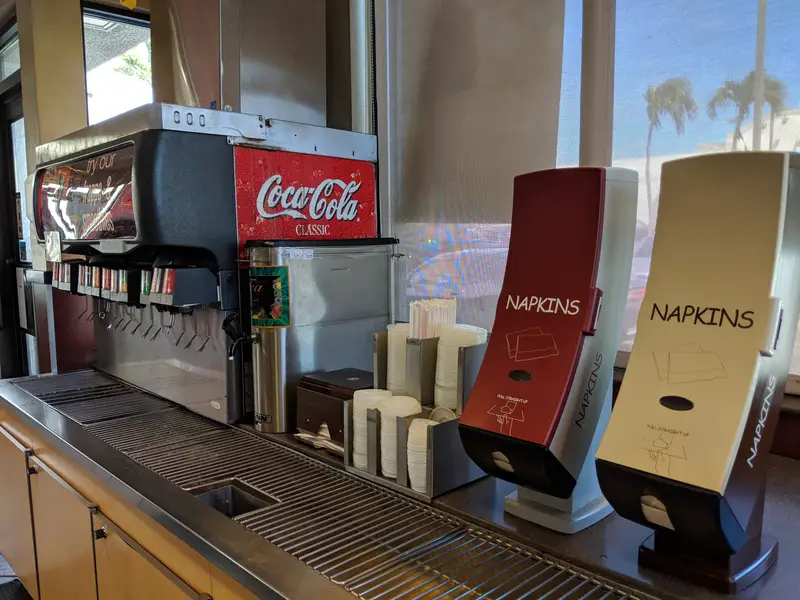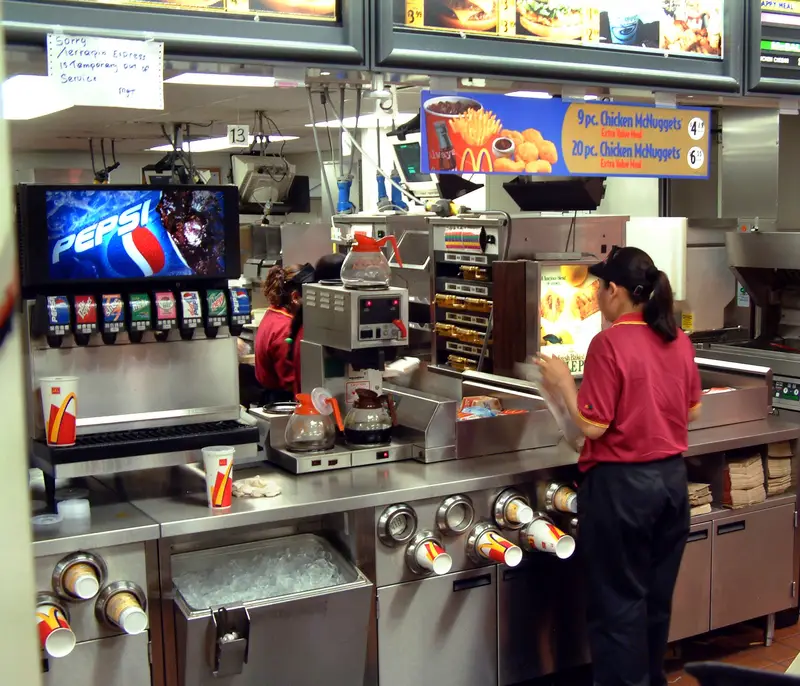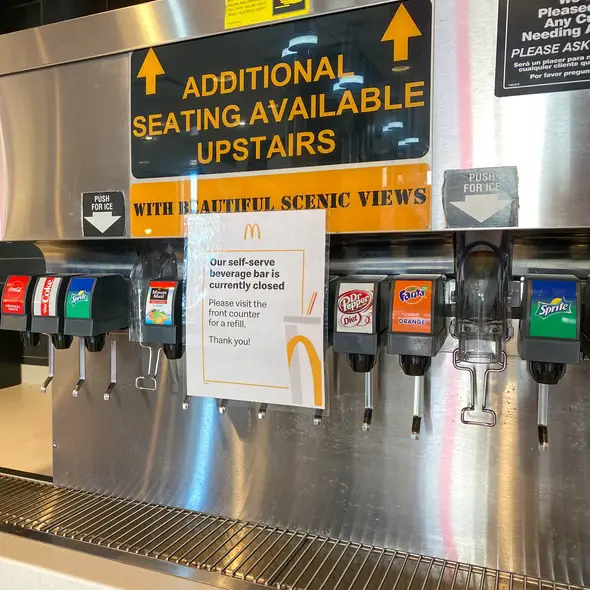In a significant shift that marks the end of an era in fast-food dining, McDonald’s has announced plans to remove all self-serve soda stations from its U.S. locations by 2032. This change represents more than just the removal of familiar drink machines – it signals a fundamental transformation in how the world’s largest fast-food chain adapts to modern consumer behaviors and operational challenges.
Self-serve stations don’t match modern ordering trends

Digital sales now account for almost 40% of McDonald’s systemwide sales. This shift toward mobile ordering, delivery, and drive-thru service has transformed how customers interact with the restaurant. Self-serve stations, designed for a dine-in focused era, no longer align with current consumption patterns.
The rise of delivery services through partnerships with platforms like Uber Eats and DoorDash has changed the game. These orders never interact with self-serve stations, creating an inconsistent experience between different ordering methods.
Many locations are already adapting their layouts to prioritize mobile order pickup areas and drive-thru efficiency, making traditional self-serve stations increasingly obsolete in modern restaurant designs.
The crew pour system creates consistency
Some franchises have already implemented a “crew pour” system, where staff members handle all beverage service. This approach ensures drinks are prepared according to standardized procedures, maintaining quality control across all ordering channels.
Early adopters of the crew pour system report minimal customer complaints after the initial adjustment period. The system allows staff to monitor portion sizes and maintain cleanliness standards more effectively.
This standardization extends to the entire McDonald’s experience, from mobile orders to drive-thru service, creating a more unified brand experience regardless of how customers choose to order.
Maintenance and cleanliness challenges

Self-serve stations require constant monitoring and cleaning to maintain food safety standards. The removal of these stations will help reduce the maintenance burden on staff and ensure more consistent sanitation practices.
Public soda fountains can become breeding grounds for bacteria if not properly maintained. Moving to a crew-served model gives McDonald’s greater control over cleanliness and food safety protocols.
The transition also eliminates issues with drink spillage in dining areas, reducing slip-and-fall risks and maintaining cleaner facilities overall.
Impact on customer experience and wait times
Some customers have reported longer wait times for refills at locations that have already removed self-serve stations. One customer mentioned a five-minute wait for a simple drink refill, compared to the 30 seconds it would take to self-serve.
The elimination of self-serve stations also impacts customers who enjoy creating custom drink combinations. Many fans of “hybrid drinks” will need to adjust their expectations or make special requests.
However, the change may actually improve service speed for the majority of customers who order through drive-thru or delivery, as staff can focus on standardized drink preparation processes.
Future of McDonald’s restaurant design
The removal of self-serve stations aligns with broader changes in restaurant design. Some locations may eventually eliminate dining rooms entirely, focusing on drive-thru and pickup services.
The space previously occupied by self-serve stations could be repurposed for mobile order pickup areas or additional kitchen space to handle increased delivery orders.
These changes reflect a broader industry trend toward automation and digital service, as evidenced by McDonald’s recent opening of an automated restaurant near Fort Worth, Texas.
The removal of self-serve soda stations represents more than just a change in beverage service – it’s part of a larger transformation in fast-food dining. As McDonald’s adapts to evolving consumer preferences and operational needs, this transition demonstrates how even the most familiar aspects of restaurant design must evolve. While some customers may miss the freedom of self-serve stations, the change positions McDonald’s to better serve its increasingly digital-first customer base while maintaining consistent service standards across all ordering channels.

